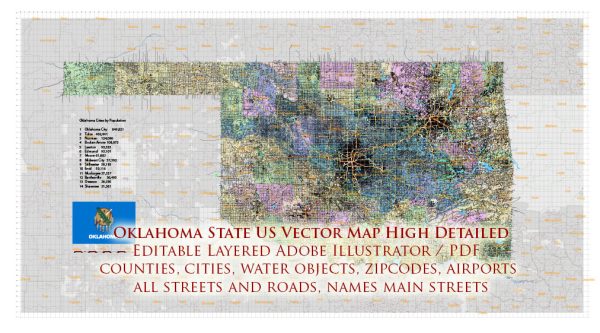Oklahoma’s urban development is a fascinating aspect of U.S. history, shaped by various factors such as Native American settlement, the Land Run of 1889, the oil boom, and economic diversification. Here’s an overview of Oklahoma State’s urban development:
- Native American Settlements:
- Before European settlement, Native American tribes, including the Cherokee, Choctaw, Chickasaw, Creek, and Seminole, inhabited the region that is now Oklahoma.
- The forced removal of these tribes from their ancestral lands in the southeastern United States, known as the Trail of Tears, played a significant role in shaping the demographics and early history of the territory.
- Land Run of 1889:
- The Unassigned Lands in central Oklahoma were opened to non-Native settlement through the Land Run of 1889. This event led to the rapid establishment of towns and cities, including Oklahoma City and Guthrie, as settlers staked their claims.
- This period marked the beginning of urban development in the region, as infrastructure and institutions were established to support the growing population.
- Oil Boom:
- The discovery of oil in the early 20th century, particularly in the areas around Tulsa, sparked an economic boom. Tulsa became known as the “Oil Capital of the World.”
- The oil industry attracted wealth and population to the state, leading to the development of urban infrastructure, including skyscrapers and modern amenities.
- Economic Diversification:
- Over time, Oklahoma’s economy diversified beyond oil and agriculture. Aerospace, energy, and technology sectors became prominent contributors to the state’s economy.
- Cities like Oklahoma City and Tulsa grew as economic hubs, with the development of industries, educational institutions, and cultural amenities.
- Urban Renewal and Revitalization:
- Like many other U.S. cities, Oklahoma’s urban areas experienced urban renewal projects in the mid-20th century. These projects aimed to modernize infrastructure but often led to the displacement of communities.
- In recent decades, there has been a focus on urban revitalization, with efforts to preserve historic districts, promote cultural events, and improve public spaces.
- Cultural and Educational Institutions:
- Oklahoma is home to several cultural and educational institutions that contribute to the vibrancy of its urban areas. These include museums, theaters, and universities that have played a role in shaping the state’s identity.
- Infrastructure Development:
- Investments in transportation, including highways and airports, have been crucial for connecting urban centers within the state and fostering economic growth.
In summary, Oklahoma’s urban development is a dynamic story of Native American history, westward expansion, resource-based economic booms, economic diversification, and efforts to balance growth with preservation and revitalization. The state’s cities have evolved from the tent cities of the Land Run to modern, diversified hubs with a rich cultural and economic tapestry.


 Author: Kirill Shrayber, Ph.D.
Author: Kirill Shrayber, Ph.D.